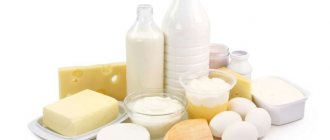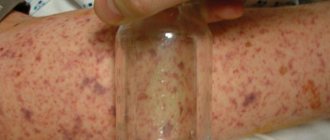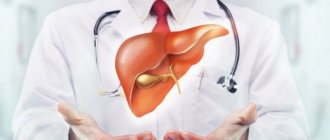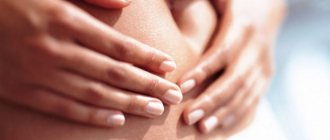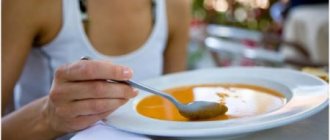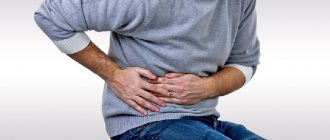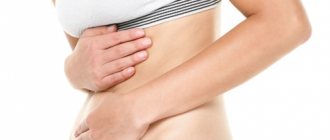Negative effects of antibiotics on the stomach
The human body is not sterile. There is a community of microorganisms that perform important and beneficial functions for humans, one of which is participation in the creation of a microbial association that does not allow pathogenic microflora to colonize and multiply in the body. Antibiotics do not have a selective effect, and their use destroys both pathogenic bacteria and beneficial microorganisms.
Due to the acidic environment, the stomach contains a limited number of colonies of microorganisms. The most acid-resistant bacteria for the stomach are:
- lactobacilli;
- gram-positive: micrococci, streptococci, bifidobacteria;
- spore-forming microbes;
- enterococci;
- mold fungi.
The most dangerous microbe leading to the formation of peptic ulcers is the bacterium Helicobacter pylori.
Antibiotics damage the gastric mucosa, inhibit local microflora, and affect one of the mucosal protection factors - prostaglandins. These are lipid mediators that are involved in regulating the synthesis of mucopolysaccharides and hydrochloric acid.
Complex medications
Complex-spectrum drugs have the most positive effect on the body. The most popular medicine is Hilak forte. Its use helps restore the large intestine and small intestine at the cellular level, allowing the acidity of the latter to stabilize. The composition of the dragee, in addition to the active substance, includes bacteria that have a positive effect on the mucous membrane, and organic acids.
Hilak Forte
Various complex products have a number of contraindications and are prohibited for use not only by women carrying a child, but also by children under 6-12 years of age, as well as people of retirement age. Hilak Forte can be used from the first months of a baby’s life until old age.
The effect of the active substance of the drug appears already in the first hours after administration. Thanks to the effects of the components of Hilak Forte, pain in the stomach is neutralized. The stool is normalized and indigestion is eliminated. Abdominal bloating is minimized, which entails blocking increased flatulence.
The main activity of the drug is to protect the intestinal microflora. It also stimulates an increase in the number and quality of beneficial microorganisms and bacteria, which have a positive effect on digestive processes.
Symptoms of dysbiosis
Stomach dysbiosis is combined with dysbiosis of the entire digestive tract, so the clinical picture includes symptoms of damage to the stomach and intestines. Initially, signs of gastritis appear: abdominal discomfort after eating, belching. Without treatment, the condition worsens: stomach pain, nausea, vomiting, and bloating occur. Stool disorder is manifested by alternating diarrhea and constipation.
Symptoms of gastroesophageal disease (GERD) may develop when stomach contents back up into the lower esophagus. Clinically, this is manifested by painful heartburn and hiccups. When the body weakens, a dangerous fungal infection of the stomach develops - candidiasis.
Diagnostics
Are used:
- FGDS - fibrogastroduodenoscopy is performed to assess the condition of the gastric mucosa, detect signs of gastritis or ulcerative defects.
- Blood chemistry. Protein fractions, serum electrolytes, cholesterol and lipoproteins, and liver enzymes are determined.
- Stool analysis for dysbacteriosis is carried out in two ways. With the bacteriological method, biological material (stool) is inoculated onto nutrient media. Based on the results of colony growth, the species and quantitative composition of microorganisms is determined. Biochemical - gas-liquid chromatographic analysis of stool - more informative and accurate.
- Coprogram. Assessment of the digestive capacity of the digestive system (presence of fibers, enzymes, dyes, bacteria).
- Tests for the presence of the bacterium Helicobacter pylori in the stomach.
Stomach recovery after antibiotics
The importance of increasing the body's defenses and restoring the liver

It is in the stomach that the majority of immune cells are located, therefore, when this organ suffers, it always affects the person’s overall well-being and susceptibility to infections. Along with the restoration of microflora, support of the immune system is also required. To prevent stomach pain after taking antibiotics, enzymes, probiotics and prebiotics are needed, and to prevent suppression of the body’s protective function, immunomodulators are needed. There are both specialized preparations, for example, “Immunal”, “Interferon” and “Imudon”, and herbal products - this is ginseng tincture, Chinese lemongrass and Eleutherococcus.
To normalize the functions of the liver and cleanse it of toxins produced by pathogenic microorganisms, you can also use natural remedies and specialized preparations. For example, rosehip decoction or Essentiale.
In conclusion, it is worth saying that antibiotics are strong and dangerous drugs that should never be taken on your own. Only a doctor can prescribe therapy with such drugs. Inadequate treatment will not only not give a positive result, but will also put the person’s overall health at risk. By the way, uncontrolled use of medication is one of the common causes of stomach pain after taking antibiotics. What to do in this case was discussed above. But it’s even better to avoid antibiotic therapy, if, of course, this is possible.
Medications
Therapy for dysbacteriosis solves the problems of restoring normal microflora of the digestive tract, improving digestion processes, and relieving pathological symptoms. Probiotics are used for this purpose.
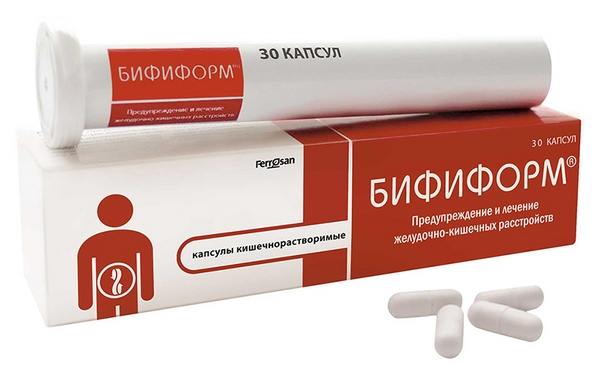
Probiotics are a class of living microorganisms that live in a healthy human gastrointestinal tract and have a positive effect on metabolic processes in the body. Lactobacterin contains acidophilic bacteria.
Bifiform – contains two types of lactic acid bacteria. The medicine prevents the reproduction and spread of pathogenic microbes in the body. It has a good therapeutic effect in antibiotic-associated diarrhea.
Inexpensive analogues of Bifiform:
- Bifidumbacterin forte . The price starts from 150 rubles for 10 capsules of the drug.
- Acipol - capsules contain live acidophilic lactobacilli. The cost of 30 capsules is 285 rubles.
- Linex is classified as a universal probiotic; it contains the full set of bacteria necessary for normal digestion (lactobacillus, bifidobacteria and streptococci). The drug maintains and regulates the balance of microbial flora.
Depending on age, probiotics are prescribed in the form of drops, capsules, tablets, and powders.
For adults, probiotics for the stomach enclosed in capsules (Linex, Bifiform) are considered the best. In this dosage form, all the properties of living microorganisms are preserved.
- Linex;
- Lactofiltrum;
- Probifor;
- Bifidumbacterin.
During pregnancy and lactation, it is allowed to prescribe probiotics, as they do not have a negative effect on the development of the fetus.
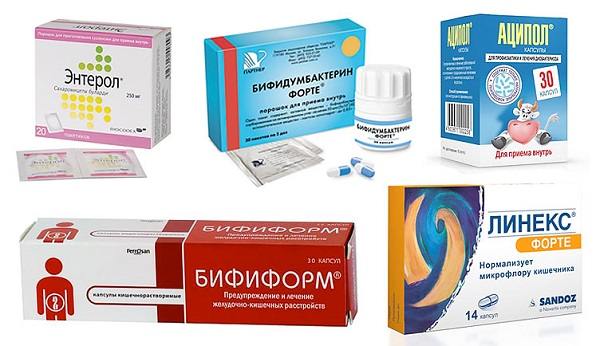
According to user reviews, the use of probiotics in the complex treatment of dysbiosis significantly reduces the severity of symptoms (diarrhea, bloating, heartburn and nausea).
For young children, the medicine is prescribed in the form of a solution and dosed in drops.
Probiotics for babies:
- Rotabiotic baby;
- Bifiform Baby;
- Hilak Forte - in addition to the treatment of dysbiosis, it is prescribed for poisoning and candidiasis.
Drug therapy aimed at restoring the gastric microflora is prescribed by the doctor. Self-medication without taking into account quantitative and qualitative changes in the microflora of the stomach can lead to an intensification of the pathological process and the development of complications.
Recovery after antibiotics
Initially, it is recommended to cleanse the large and small intestines. The procedure will eliminate the remaining particles of drugs, as well as neutralize the last pathogenic bacteria. For this purpose, you will need to drink one tablet of activated carbon daily, with a small volume of liquid at room temperature.
But this recovery method is not suitable if the substances have been used for a long period of time. When exposed to internal organs, antibiotics are broken down, forming complex compounds. The latter settle on tissues.
Recovery methods
To eliminate the transformations, you will need to use a mixture of apple cider vinegar, boiled liquid and honey. The solution effectively affects compounds, breaking them down and removing them from the intestinal cavity.
In order for the body to get rid of the toxic effects of antibiotics, a number of measures should be taken:
- healthy lifestyle
- rational approach to nutrition
- consumption of fermented milk products
- enzyme preparations
- probiotics, prebiotics or symbiotics
- lactulose-based preparations
- complex medications
Each of the methods has a positive effect on the internal organs of a person. Before you begin to restore the microflora of the stomach, you need to consult your doctor. He will select the most optimal option to solve the problem. To obtain results, you will need to clearly complete all assigned tasks.
Colon cleansing drugs: types of medications, rules of administration
Diet
Diet, along with medications, is a prerequisite for the treatment of dysbiosis. With dysbiosis, there is a gap in the balance between beneficial and pathogenic microbes, the process of digestion and absorption of nutrients is disrupted, so food during this period should be mechanically and chemically gentle. In the diet it is necessary to reduce the amount of sugar and foods that cause increased gas formation: grapes, black bread, fresh milk.
Recommended:
- cooking method: boiling, stewing, baking, steaming;
- dairy products;
- puree soups, pureed boiled vegetables, water porridge;
- dishes made from minced lean meat: chicken breast, turkey, rabbit;
- drinks: jelly, compotes of dried fruits and fresh sweet berries.
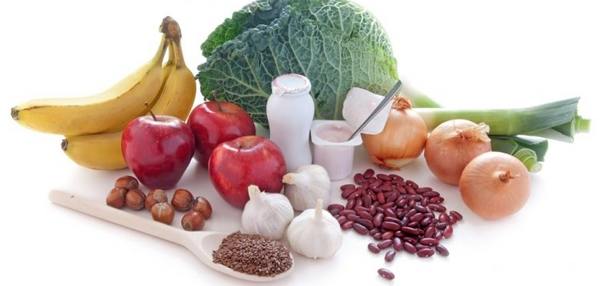
Prohibited:
- fried, spicy, smoked dishes;
- baked goods, confectionery, cakes, sweets);
- marinades, canned food;
- drinks: alcohol, coffee, strong tea, sparkling water;
- fatty meats and fish.
Natural probiotics are found in foods:
- cheese;
- kefir;
- yogurt;
- buttermilk;
- legumes (peas, beans);
- sauerkraut;
- garlic, onion;
- bananas.
Regular inclusion of these products in the diet will help normalize the biocenosis of the stomach and intestines.

The duration of the diet is at least 3 months.
Synbiotic on a plate
When a food containing good bacteria (probiotic) is combined with one that provides them with a nutrient medium (prebiotic), it will be a naturally effective synbiotic. This diet will help you restore the protective microflora in your body and avoid colds, flu or sore throat in the future.
Probiotic Treats
These include all products that have been subjected to the process of lactic fermentation. They contain lactic bacteria, which, when they enter the body, populate “strategic” places - the mouth, vagina, intestines, intestines. Thanks to these bacteria, you will become resistant to infections. The best sources of good bacteria are fermented vegetables (eg, cabbage, cucumbers, tomatoes), fermented milk products (eg, natural yogurt, Greek yogurt, kefir, buttermilk, sour milk).
Prebiotic Supplements
They are an excellent addition to probiotic delicacies. They contain inulin, which stimulates the growth of beneficial bacteria, further reduces the concentration of glucose and bad cholesterol, and also improves the absorption of minerals.
Prebiotics, in particular, include:
- Onions (including leeks)
- Chicory
- Bananas
- Asparagus
- Artichokes
Onions are not only a prebiotic, but also a natural antimicrobial agent.
Chicory is a true prebiotic tycoon! It also has a good effect on liver function.
Leeks contain not only inulin, but also mineral salts. Ideal for rheumatic pain.
Healthy recipes
There are many options for making healthy synbiotic meals!
1 Add a few slices of green onions and half a grated apple to the chicory cut into rings, mix with kefir or natural yogurt. A pinch of pepper to taste.
2 Add chopped banana to natural yogurt.
Bananas, in addition to inulin, contain tryptophan, which will ensure a good mood.
ethnoscience
Traditional medicine methods are used to restore the stomach after antibiotics as an adjuvant. During the rehabilitation period, decoctions and infusions of herbs that have an enveloping effect are useful: flax, Lyubka bifolia, spotted orchis. These herbs create a protective layer on the surface of the gastric mucosa that protects it from the irritating effects of gastric juice.
Herbs with anti-inflammatory effects: chamomile and calendula inflorescences, St. John's wort, yarrow, yellow gentian, calamus root.
To normalize upset stools during diarrhea, infusions from medicinal raw materials are prepared:
- oak bark;
- bergenia root;
- burnet root;
- bird cherry berries;
- Potentilla erecta.
For constipation use:
- fennel;
- anise;
- caraway;
- dill;
- buckthorn;
- zhoster.
Alternative medicine methods
We have already received the answer to the question of whether the stomach can hurt after antibiotics, as well as why this happens, and we have even considered several possible options for eliminating these unpleasant phenomena. But therapy is more effective and faster if it is comprehensive. There is another good “helper” in the fight against dysbiosis - traditional medicine. Recipes that have been tested for decades give no reason to doubt the effectiveness of these remedies. Let's look at the most useful of them.
- For 10 days before breakfast and after dinner, it is recommended to take an infusion of walnuts, pumpkin seeds and sunflowers. All ingredients in the amount of 10 g of each must be crushed, pour in 100 ml of boiling water and allow time to brew.
- For decades now, doctors have recommended giving newborns dill water, which helps the baby get rid of flatulence. This is a truly effective remedy that you can prepare yourself. You need to pour 1 teaspoon of dill seeds into 100 ml of boiling water, leave, strain, and then drink 1 spoon 3 times a day.
- When your stomach hurts after a course of antibiotics, it may be accompanied by diarrhea. To get rid of it, it is recommended to seek help from raspberries and currants. The recipe is simple - make a compote from the berries, and then drink 2-3 glasses of it a day. This will be useful not only for the gastrointestinal tract, but also for the whole body.
- If long-term antibiotic therapy is required, patients are advised to drink beetroot juice. It helps normalize the level of red blood cells.
- An infusion of kombucha helps improve the digestion process. It is also useful not only for the stomach, but also for the whole body.
- Propolis tincture has excellent anti-inflammatory and regenerating properties. It helps restore normal functioning of the stomach and helps “grow” beneficial microflora.
Prevention
You can minimize the harmful effects of antibiotics on the gastric mucosa and microflora by following these rules:
- Never take antibiotics without a doctor's prescription, for example, for acute viral infections.
- Strictly follow the instructions for using the medicine: before or after meals, dose, frequency of administration.
- During antibiotic therapy, adhere to a diet containing substances that protect the walls of the stomach (mucous porridges, jelly, puree soups).
- If the patient has already had manifestations of dysbiosis in the past when taking antibiotics orally, switch to parenteral (intramuscular or intravenous) administration. In this case, the medicine will enter the bloodstream, bypassing the gastrointestinal tract.
- Take the tablets only with cool boiled water. The components of tea, compote, milk react with the active ingredient of the medication.
- During treatment it is unacceptable to drink alcohol.
Healthy lifestyle
In order for the body to function normally again, you should adhere to a healthy lifestyle. This concept includes the introduction of certain restrictions on the use of certain categories of the body, as well as a review of one’s lifestyle.
To restore intestinal flora to its natural state, you must adhere to the following rules:
- Quitting nicotine addiction, alcoholism and drugs.
- Be sure to load your body with physical activity.
But this kind of impact on the body must be strictly controlled by the trainer. Intense exercise has a negative impact on people susceptible to diseases or disorders of the gastrointestinal tract. Healthy lifestyle rules - Establish a diet and also resort to rational consumption of foods. To establish the normal functioning of the digestive organs, it is necessary to introduce only healthy ingredients into the diet. To eliminate stomach problems, it is recommended to eat food in small portions, using split meals. This means that food should be served in small quantities, but several times a day (up to 5-6 per day). All dishes with a fatty consistency, with an abundance of spices, and with a large amount of carbohydrates are eliminated from the diet. Lean on foods containing high fiber and protein content. These ingredients include meat, green vegetables, fresh fruits, legumes and lean fish. The volume of fluid absorbed should be monitored. To actively remove toxins and harmful substances, you need to consume at least 2 liters of water per day.
- It is necessary to distinguish between hours of active work and productive rest. Most people suffering from psychological disorders and depression do not get proper rest. Such patients are content with short-term breaks, which also negatively affect the functioning of the intestinal tract.
- Do not refuse to take vitamin complexes. They allow you to improve the functioning of the gastrointestinal tract, restoring the mucous membrane and the required microflora of the stomach. In addition, they enhance the body's immune system.
Thus, a healthy lifestyle is an important aspect in restoring the microflora of the digestive system. After all, the entire human condition depends on the normal functioning of the internal organ.
Advice from a gastroenterologist
The symptoms present in dysbiosis of the digestive tract are nonspecific and occur in many other pathologies.
Restoring the functional ability of the stomach after antibiotic therapy is possible only after a thorough examination and treatment prescribed by a gastroenterologist.
If long-term use of antibacterial drugs, especially broad-spectrum ones, is necessary, probiotic drugs, vitamins and microelements are included in complex therapy
If the first signs of dysbacteriosis occur, follow a diet without substances that irritate the mucous membranes.
Unpleasant consequences of antibiotic treatment
Pharmaceutical companies are developing more and more new forms of antibiotics every day. The drugs are sold in pharmacies without a prescription, and anyone can purchase them.
During an inflammatory process, many people immediately rush for an effective remedy against all panaceas. But antibiotics may not always help. Self-medication in this case only leads to a further deterioration of the general condition. In addition, a number of different consequences may additionally appear, such as:
- Digestive system disorder: nausea, vomiting, diarrhea or, conversely, constipation.
Such consequences appear immediately after the medication is introduced into the body. The effect is carried out until the active substance is completely absorbed into the intestinal walls. Taking antibiotics - Intestinal dysbiosis – bloating, constipation, diarrhea. Occurs due to the effect of the drug on both pathogenic cells and beneficial bacteria, eliminating everything in its path.
- Allergic reactions - skin rash, urticaria, itching and burning, anaphylactic shock, angioedema. Any manifestation of an allergy is a reason to refuse to take the medicine.
- Candidiasis in the oral cavity or vagina is an infectious disease caused by fungal bacteria. Curd formation in the form of plaque.
- Hepatotoxic and nephrotoxic effects - the toxic effects of antibiotics lead to damage to kidney and liver tissue. This condition is manifested by severe thirst, frequent urge to urinate, or, conversely, rare trips to the toilet. Blood tests detect an increase in urea and creatine levels.
- Hematological changes - when exposed to a broad-spectrum drug, their molecules settle on plasma cells, destroying it. The result of exposure is the formation of hemolytic anemia.
To ensure that antibiotics have only a positive effect during treatment, neutralizing the bacterial disease, you should consult a qualified doctor. The latter will accurately determine the diagnosis and prescribe effective treatment.

